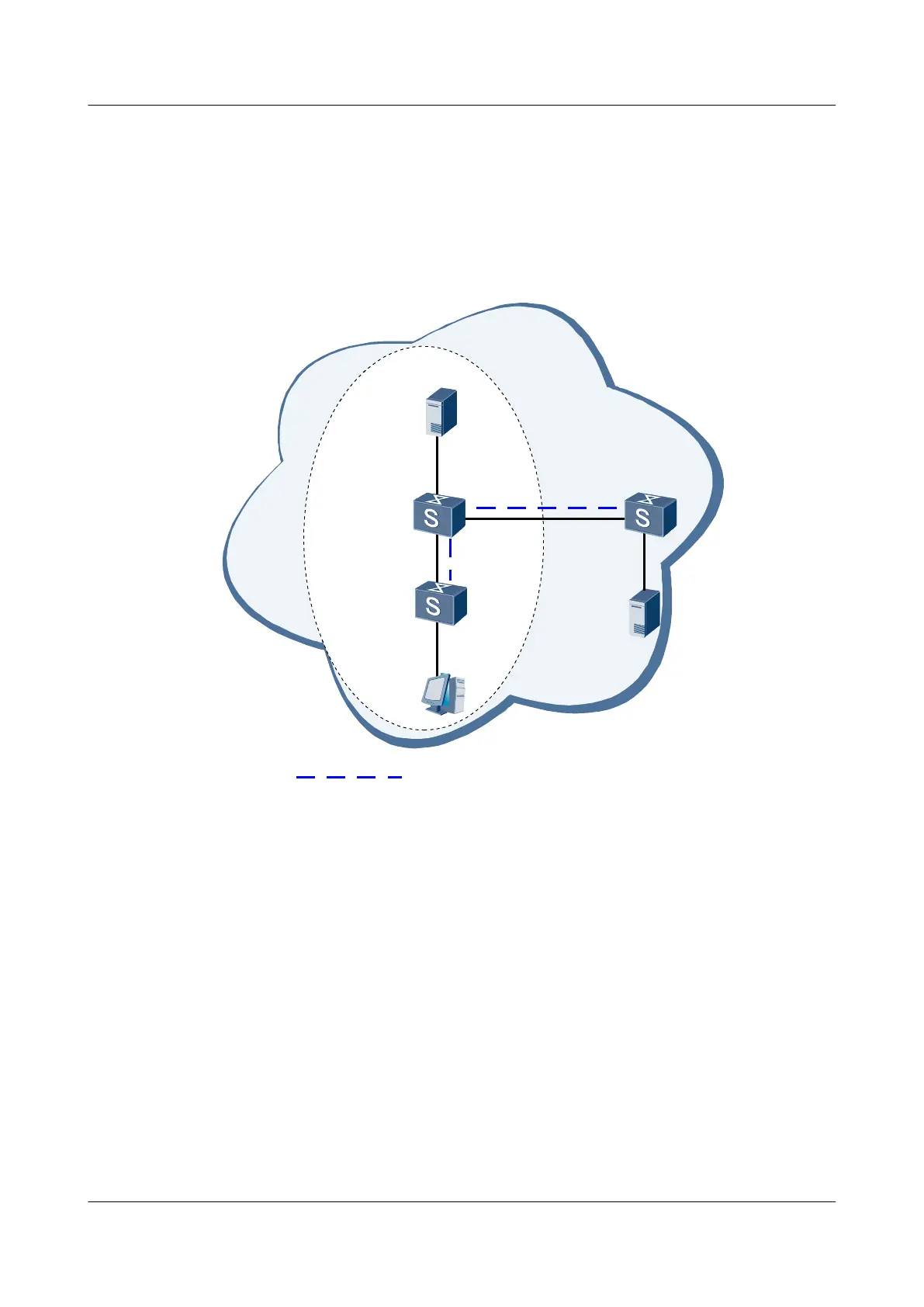Networking Requirements
As shown in Figure 6-2, PIM-DM runs on the network and all S9300 support multicast. The
receiver can receive information from the multicast source Source1. S9300-B and S9300-C run
OSPF. No unicast route is available between S9300-A and S9300-B. You need to use a multicast
static route to enable the receiver to receive information sent by Source2.
Figure 6-2 Networking diagram for connecting the RPF route through static multicast routes
S9300-A
GE1/0/0
Source2
10.1.5.2/24
Source1
S9300-C
S9300-B
GE1/0/0
GE1/0/0
GE3/0/0
GE2/0/0
OSPF
Receiver
Multicast static route
GE3/0/0
GE2/0/0
PIM-DM
10.1.3.2/24
Switch Physical interface VLANIF interface IP address
S9300-A GE 1/0/0 VLANIF 11 10.1.5.1/24
GE 3/0/0 VLANIF 40 10.1.4.2/24
S9300-B GE 1/0/0 VLANIF 20 10.1.2.2/24
GE 2/0/0 VLANIF 13 10.1.3.1/24
GE 3/0/0 VLANIF 40 10.1.4.1/24
S9300-C GE 1/0/0 VLANIF 20 10.1.2.1/24
GE 2/0/0 VLANIF 12 10.1.1.1/24
Configuration Roadmap
The configuration roadmap is as follows:
1. Configure the IP addresses of interfaces and the unicast routing protocol on each S9300.
2. Enable the multicast function on all routers, PIM-SM on all interfaces, and IGMP on the
interfaces connected to hosts.
6 Multicast Route Management
Quidway S9300 Terabit Routing Switch
Configuration Guide - Multicast
6-20 Huawei Proprietary and Confidential
Copyright © Huawei Technologies Co., Ltd.
Issue 01 (2009-07-28)

